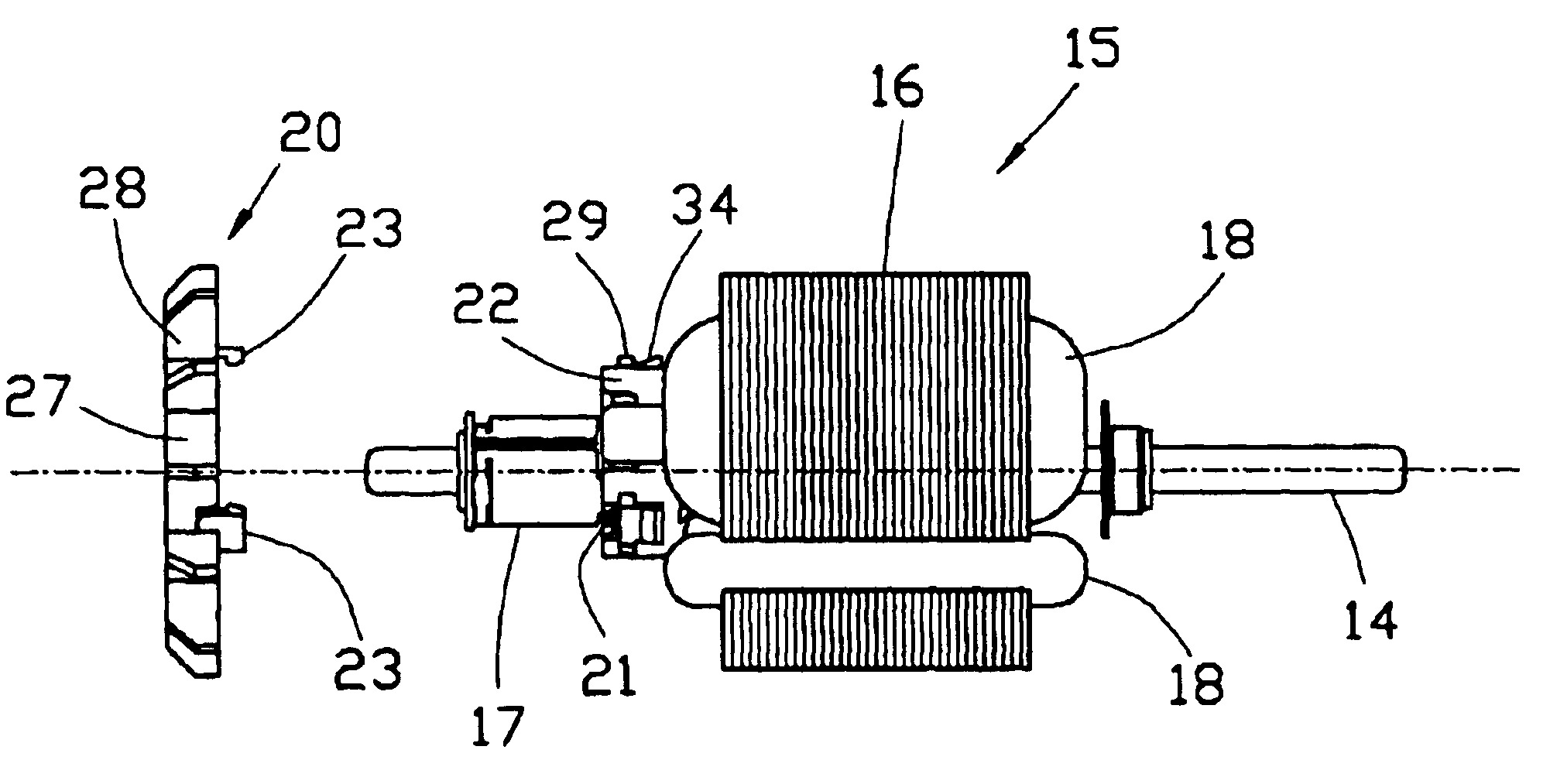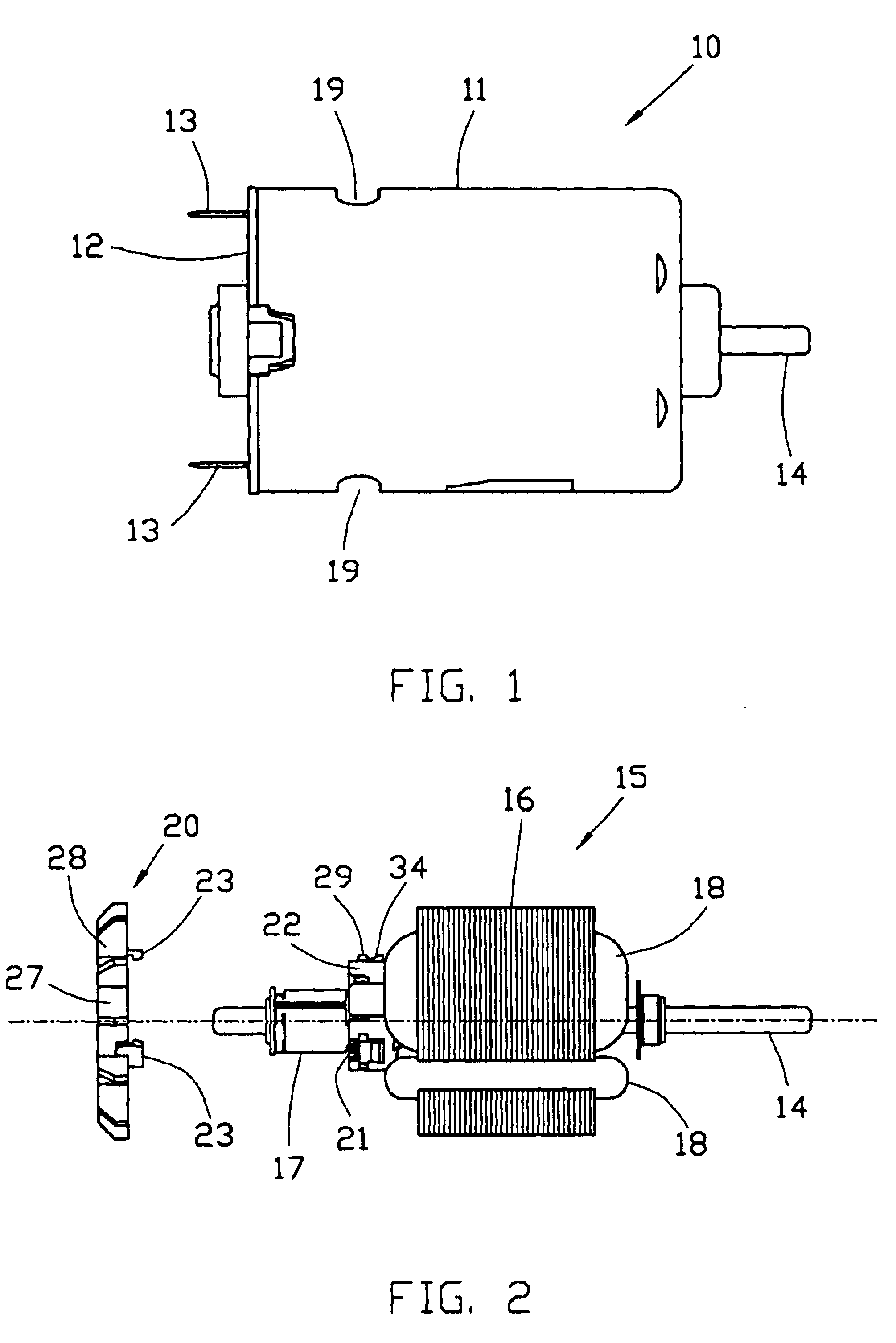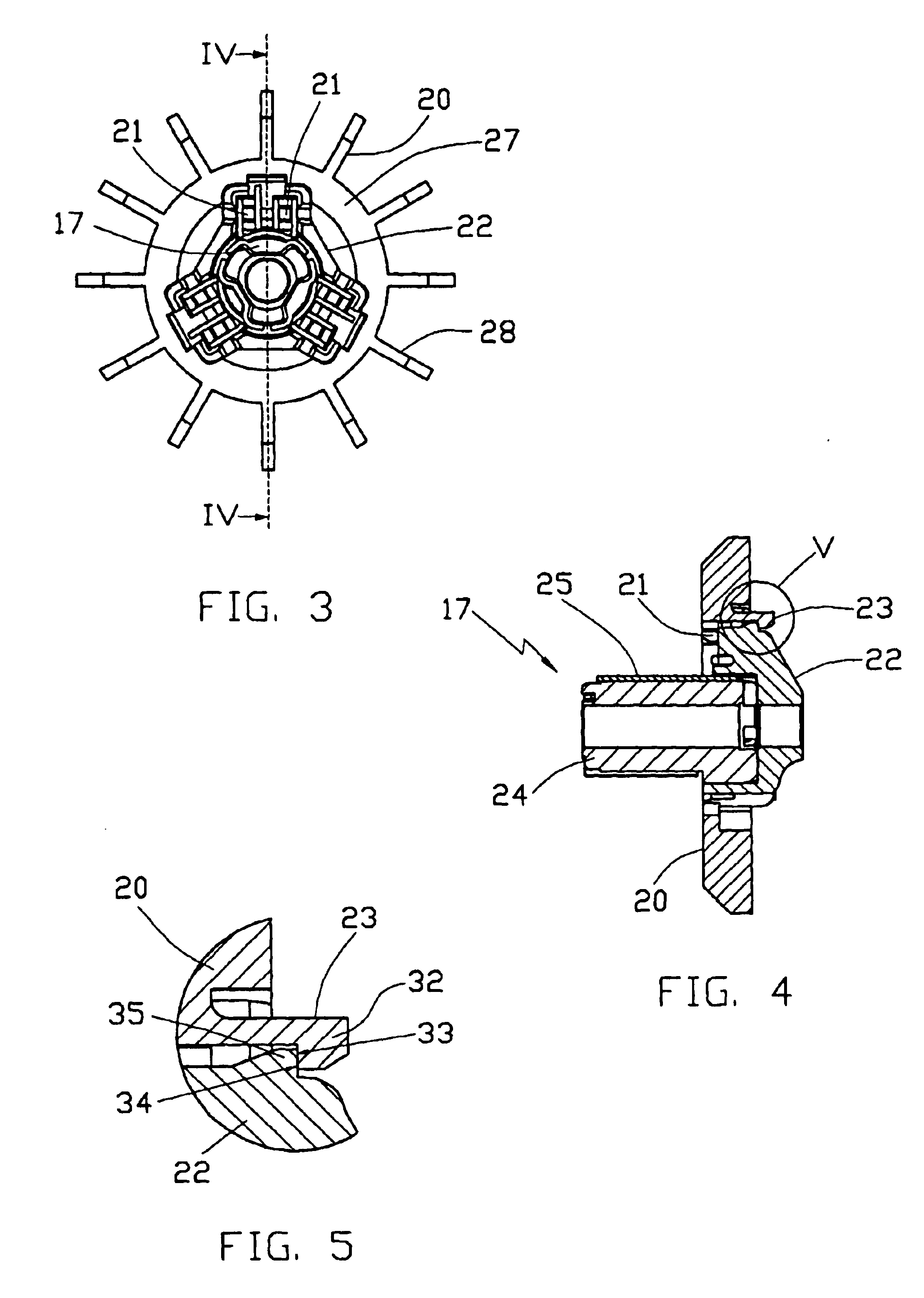Electric motor
a technology of electric motors and motors, applied in the direction of electric generators/motors, dynamo-electric machines, rotary current collectors, etc., can solve the problems of no cooling air flow from the fan and big impediment to cooling
- Summary
- Abstract
- Description
- Claims
- Application Information
AI Technical Summary
Benefits of technology
Problems solved by technology
Method used
Image
Examples
Embodiment Construction
FIG. 1 shows, in side view, a small PMDC motor 10 representing the preferred embodiment of the invention. The motor has a deep drawn metal rear housing 11 supporting a permanent magnet stator. The open end of the housing is closed by an end cap 12 which supports motor terminals 13 and brushes. The housing 11 has ventilation apertures 19. A wound rotor or armature cooperates with the stator. The motor has a shaft 14 journalled in bearings fitted to the end cap 12 and closed end of the housing.
The rotor 15 is shown in FIG. 2. The rotor 15 comprises rotor core 16 mounted on the shaft 14. A commutator 17 is mounted on the shaft 14 at one end of the core 16 adjacent the end cap 12 so that the brushes make sliding contact with the commutator 17. Windings 18 are wound around poles of the rotor core 16 and electrically terminated on the commutator 17. A fan 20 is fitted to the commutator 17.
As shown in FIG. 2, the fan 20 is fitted to the commutator 17 after the rotor 15 has been wound. This...
PUM
 Login to View More
Login to View More Abstract
Description
Claims
Application Information
 Login to View More
Login to View More - R&D
- Intellectual Property
- Life Sciences
- Materials
- Tech Scout
- Unparalleled Data Quality
- Higher Quality Content
- 60% Fewer Hallucinations
Browse by: Latest US Patents, China's latest patents, Technical Efficacy Thesaurus, Application Domain, Technology Topic, Popular Technical Reports.
© 2025 PatSnap. All rights reserved.Legal|Privacy policy|Modern Slavery Act Transparency Statement|Sitemap|About US| Contact US: help@patsnap.com



